#Grolier Educational Learning Tools
Explore tagged Tumblr posts
Text
Grolier Keymatic: Learning Math Made Easy!
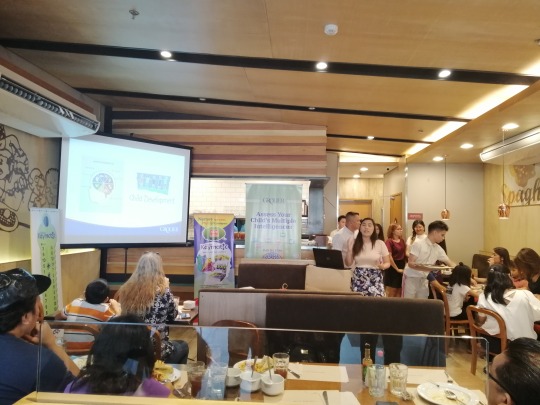
Grolier is the biggest book publisher and distributor of children’s book in the world. Established in 1895, the company continues to provide quality products to help parents educate their children in a fun and exciting way. Teaching at home, is the first education that a child can get before starting to go to school so it’s very critical for parents to educate them the right way.
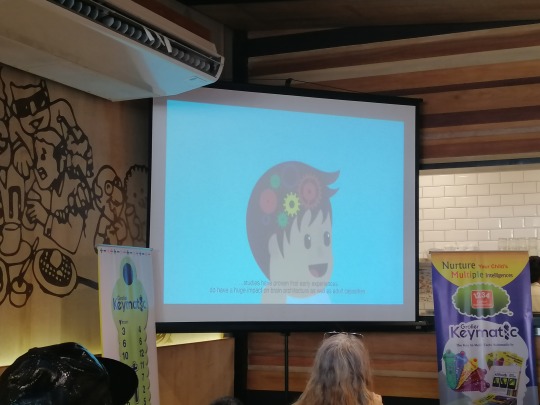
To further promote their company in the country, Grolier Philippines recently held an event at Filinvest Mall in Alabang. They talk about the theory of multiple intelligences by Dr. Howard Gardner which states that human beings do not have just an intellectual capacity, but have many kinds of intelligence, including musical, interpersonal, spatial-visual, and linguistic intelligences that’s why as early as possible, parents must know how to hone their child’s strengths.
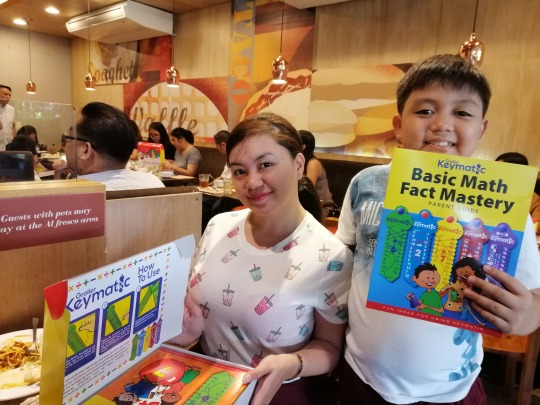
Grolier Keymatic is as easy as 1,2,3.I had the opportunity to try it out and it's fun to use.
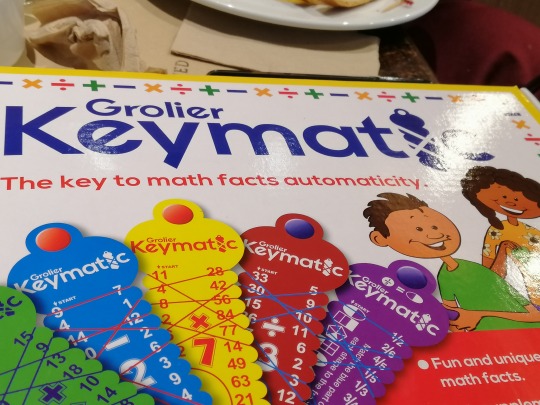
Grolier Keymatic is a unique way to successfully memorize math facts. Perfect supplemental tool for all 3 tiers of the Response to Intervention (RTI) model. Build self-confidence and proficiency by providing immediate reinforcement for correct answers. Meets NCTM educational standards with skills appropriate material for maths. Utilizes the 3 senses; visual, auditory and kinesthetic for effective learning. Wipe-clean workbooks can be used multiple times for repeated exercises to enforce basic math facts mastery.
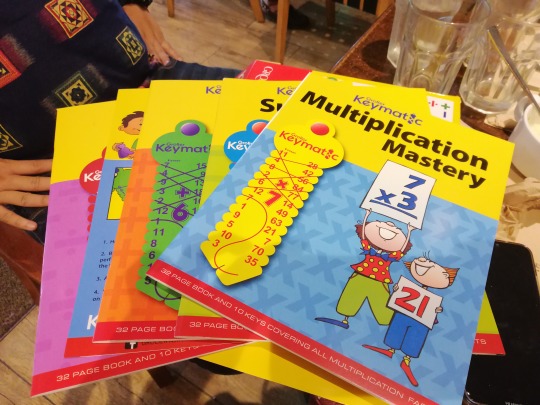
Mastery in addition, subtraction, multiplication, and division can be expected. Even fraction and mix numbers can be learned through this tool.

Grolier Philippines also held an open event at the Filinvest Mall Alabang. Mall goers had the opportunity to experience Keymatics.

Grolier has a lot of products. Before buying any learning materials, an assessment team will test the kids to determine their learning curve and what products you should buy for them.
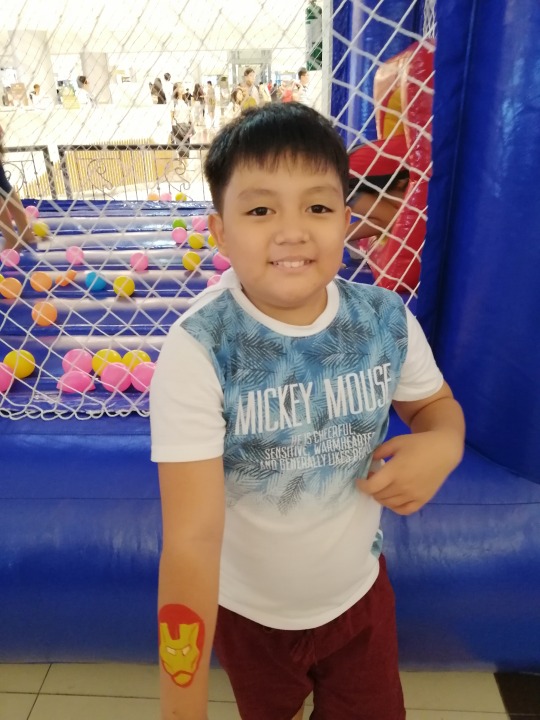
There are a lot of exciting activities during the event. Face and body painting was a hit!

Magic show, clown performances and trampoline area made the event even more interactive.

More than learning, Grolier Philippines wanted every kids to enjoy and play. This event made children of all ages really happy.

We also love their cute mascots. My nephew can't get enough of them

Grolier Keymatic is very useful for kids and parents a like, they can truly benefit from it. Grolier can be considered as the number one source of effective educational tools for children in their critical stage of learning.
#Grolier#Grolier Philippines#Grolier Keymatic#Keymatic#Learn Math Easy#Kids Learning Tools PH#Grolier Educational Learning Tools
0 notes
Text
Role of Internet in Today's Education
Internet plays a most vital role in education. It helps us in our professional as well as personal life. For educational purposes, it is widely used to congregate information as well as do research work. It adds to the knowledge of various subjects including for online classes. Today the Net offers an easy and instant reach to a vast amount of information in just a few seconds. It contains a wealth of knowledge that can be searched at any time. The internet has introduced improvements in technology, communication, and online entertainment. Students need internet to search for information related to exams, curriculum, results, etc. There are various benefits of the internet in the field of education.
Cost Effective and Affordable Education
Internet is the cost effective and affordable way of technology. It provides education through Videos and web tutorials which is affordable for everyone. The Internet improves the quality of education, which is one of the pillars of sustainable development of a nation.
Interactive Digital Media
Multimedia helps students in learning process and to simplify the knowledge. It helps in visualizing what is being taught in school by teachers. Digital bulletin boards save paper, allow displaying of videos and audios to attract their attention.
Learning Tools
Internet is very important for the learners. Teachers can post their teaching notes and videos online that are very essential for digital education. The learning process becomes interesting and diverse with tutorial videos and notes. Teachers can teach by using animation, power point slides, and images as teaching tools to make learning more diverse and interesting.
Access to Online Education
Internet helps in easy accessing of online education. Students can easily get videos and notes either by paying fees online or by free video sites. Currently, teachers record their lectures and provide it to the students for revisions which is better than reading from notes.
Updated Information
There is ample information available onevery subject. It keeps us updated with latest information. We can find various videos, newsletters, teaching materials (Notes), E-books etc. that benefit students to gain knowledge.
Internet is a learning bridge between teachers and students. It is affordable and cost effective. The world wide web helps in finding updated information as it is easy to access.The Internet is a boon to everyone, and is used all over the world. It has had a great impact on imparting education.. If this is used in appropriate ways for student’s development, they can benefit and learn from the Internet.
talking teacher
talking books for kids
grolier talking books
online pre school in india
best online preschool in india
best online pre school
online pre school
pre school franchise in india
pre school franchise
best play school in india
Talking books for kidsTalking teacher
best perschool programs in india
Online Preschool in india
best online preschool in india
play school in india
best online classes for kids in india
best online coding classes for kids
best online courses for kids in india
best online learning platforms for kids
Online learning Programs
best online school for kindergarten
best online preschool classes
children book publisherchildren books
children online classes
classes for kids onlinetalking books
virtual classes for kids in india
courses for kids online
early learning kit
educational books for kids
courses for kids online
early learning kit
educational books for kids
free courses for kids
free online classes for kids
free online classes for preschoolers
free online classes for ukg students
free online courses for kids
free online nursery classes
free online preschool classes
free virtual classes for kidsfree worksheets
fun online classes for kidshome learninghomeschoolingkids books
kids learning platform
kids learning platform
kids virtual classes
kindergarten online classes
learn from homelearning books
learning books for preschools
learning videos for kids
online classes for kids
online coding classes for kids
preschool franchisepreschool kits
preschool virtual classroom
preschool worksheetssoft toys for kids
speaking books with talking pen
online writing classes for kidsstory books
story telling for kids
worksheets for kids
zoom classes for kids
#talking teacher#talking books for kids#grolier talking books#online pre school in india#best online preschool in india#best online pre school#online pre school#pre school franchise in india#pre school franchise#best play school in india#Talking books for kids#Talking teacher#best perschool programs in india#Online Preschool in india#play school in india#best online classes for kids in india#best online coding classes for kids#best online courses for kids in india#best online learning platforms for kids#Online learning Programs#best online school for kindergarten#best online preschool classes#children book publisher#children books#children online classes#classes for kids online#talking books#virtual classes for kids in india#courses for kids online#early learning kit
0 notes
Text
Importance Of Digital Education
Schools across the nation are already closed due to COVID19 and education is the prime aspect for every toddler and their parents. If school closes down for a longer period of time digital education will help in delivering the virtual classes to engage kids and keep an eye on their progress.
Now, parents prefer online education for their kids so they get organized recreational classes where kids have learned with fun activities to grow and enhance child’s mental aptitude. From a survey a child’s brain develops fastest till the age of 3 years. It is the time when a child’s rapid, all inclusive development takes place. Till the age of 3, is the right time to shape a child’s mental progress by involving them in creative activities. Whatever they think, feel, behave and imbibe will build their present and future.
Virtual Education or Digital Education is a tool where a child gains knowledge by latest and innovative techniques in a prescribed curriculum. There are following benefits of digital education:
1.Online Education at Own Pace Some students are fast, few are slow. Digital learning will help children to learn at their own pace so that when they require, they can speed up their pace they master about that topic.
2.Flexibility in Digital Education It is an advantage that kids get opportunity to return to previous lessons. Easy storage of activities by children, flexibility and no time bounding on working of assessments.
3.Access from Anywhere By online education or e-learning, parents can easily connect their kids for digital learning from anywhere at any time.
4.Learning Is Fun Various assessments, curriculum, worksheets etc. learning methods, variety of areas in a new manner, which will encourage children to learn more and improve their learning experience.
5.Real Time Assessment Digital learning provides a benefit of real time learning so that you can evaluate your child’s growth and work on his weakness within the given time.
6.Range of Learning Styles Various ebooks, worksheets, lessons, learning videos, online series etc. can provide a wide range of learning styles which parents can use for their kids to learn.
Due to COVID 19 pandemic it is very difficult to provide the right educational balance for children. In this era of technology, the underage children or toddlers are communicating with technology. Since technology is a part of our daily life, the proper use of technology promotes the development of children to enhance their mental growth.
talking teacher
talking books for kids
grolier talking books
online pre school in india
best online preschool in india
0 notes
Text
Helping Students Become Better Online Researchers
Your students are probably Internet authorities. When it comes to Instagram, Twitter, and YouTube, they might know far more than you. All of that time spent tweeting and chatting doesn’t necessarily translate to deep learning though. As students progress through school, online research skills become more important — for good reason.
Both college professors and employers will expect young people to know their way around the academic side of the Internet; a skill that for many students, needs to be taught. In a Pew survey, a majority of teachers said that their students lacked patience and determination when doing difficult research. A majority of teachers also said that their students didn’t know how to use multiple sources to support an argument. We’re about to change that. Read on to find some of the best websites for teaching digital literacy.
Image via Flickr by Brad Flickinger
For many students, doing research means typing a word or two into a Google search and using information from the first link that pops up. Students need to know that the quality of their search terms helps determine the quality of the information that they find. If you’re new to strategic searching, or need fresh ideas, we’ve gathered some lessons to get your students’ brains turning.
You will find lesson plans to teach strategic searches to middle school and high school students. As with everything on the Common Sense Media site, these lessons are focused on finding quality material and keeping children safe online.
Of course Google will be a go-to source both for doing searches and for finding related lessons. Google has lessons on selecting search terms, narrowing searches, and evaluating sources. Options range from beginning to advanced, so you can tailor the lesson to students from elementary school on up. For some brainy fun, try the Google A Day Challenge, which poses difficult questions that students might be able to answer with their new searching expertise.
Do you have a complicated relationship with Wikipedia? You’re not alone. While the site is packed with interesting information, students tend to use it as a one-stop shop for research. Often, they don’t realize that they need to check the reliability of that information. The Internet is overflowing with all sorts of biases, and students must learn to sort fact from fiction. This can be a challenging lesson to teach, but it’s usually fascinating as well.
Here, you will find a short video of a lesson on assessing websites. The Teaching Channel also has lesson ideas for teaching online research and fair use. This is a great site for teachers who can’t devote a full class period to research skills and need quick, succinct lessons.
This is an in-depth lesson plan for teaching students to evaluate web sites. Students will learn to consider the author, audience, and purpose of a website and to ponder the role of advertising. There are good resources here, such as a website evaluation form, even for teachers who don’t want to use the full lesson.
Find an amalgamation of resources here to teach critical evaluation. There are links to lesson plans and articles on the importance of digital literacy. The 5 W’s of Website Evaluation worksheet is a handy reminder of everything that your students — and you — should be thinking about when gathering information from a website.
Though the Internet offers breadth on every topic, it sometimes doesn’t offer much depth. And a simple Google search often won’t lead students to the meaty resources they should be using. We’ve gathered sites that will give students the detailed research they need quickly, saving them — and you — hours of frustration. Along with these sites, remind students that many newspaper websites have searchable archives.
This portal guides children from kindergarten through high school on how to select keywords, take notes, and more. It also allows children to search kid-friendly databases, such as Grolier Online, so that they find information that is right for their reading level and age.
Students can search millions of books for information, and they will find previews of pages or even an entire book. Some students might use this to avoid a trip to the library. But with some helpful teacherly guidance, this could be a stepping stone that gets kids into the library to dig deeper.
Google’s academic search site sifts through scholarly articles and even law cases. This is best for high school students who already have some research experience. Send them here when they need authoritative information to support their views.
Explaining plagiarism with books is clear-cut. The author’s name is there on the cover, and the author was paid for the work. The Internet can be trickier to work with. Sometimes no author is named, and much of the information is provided for free, so students might not see any harm as passing the work off as their own. Any lesson on research will also require a lesson on citations and fair use. Many teaching websites offer ideas, and we’ve found a few more.
The writing lab has links to lessons both on understanding plagiarism and teaching students how to avoid it. Use these ideas to have students create their own ethics policy or one for the whole class.
If you think a discussion of plagiarism might be a snooze, check out the resources here. You’ll find lessons involving plagiarism in music and even school textbooks. Students can also respond to questions about whether cheating is increasing and whether they consider this a big problem.
Students — and if we’re being honest, teachers — love online research because it saves time. They don’t have to go to the library and wander through shelves of books. Remind students that although online research is wonderful, librarians are also wonderful. They are experts in information technology and often know of the best resources — even online — for students. So keep these websites handy, but befriend your librarian, too.
Editor's note: This piece was originally written by Jeff Dunn and ran on November 9, 2012. A lot has changed since then, so we've had author Sarah Muthler update this piece with the latest techniques and innovations.
5 Comments
October 3, 2015 at 12:06 pm
I once had a lesson with my Spanish learners and we used Google to find specific grammar topics. It was fun and the learners liked it too.
It's a very effective way to teach multiple skills to students.
October 13, 2015 at 3:36 am
Nowadays Internet is need of every people. So keep update with your child in on-line presence and teach them how to on-line research are done. This article is best option for on-line presence.
October 22, 2015 at 2:39 am
That's the danger with doing research today. It is far too tempting to type the search term into google rather than investing the time to do genuine research.
November 12, 2015 at 7:58 am
Our world is addicted to technologies. It's hardly ever to imagine the way technological evolution has changed our lives. So, I think every teacher needs to tech children how to use google and find out the information they really need. Such kind of research, without doubts, will cultivate logical way of thinking. By the way, the idea of plagiarism works! Actually, the problem of plagiarism settled unawares in my class, so I've decided to dedicated lesson to this. We're talking about famous plagiarists. Also, students compared some texts using Unplag checker https://unplag.com/ The results were awesome! From that day, every Friday we discuss with students educational innovations which can paint their studying process.
Christine McKenna Lok
November 16, 2015 at 2:43 am
Advertisement
What is 'School Choice'?
The nationwide implementation of school choice would require a significant overhaul of the nation's education landscape. The impacts, both positive and negative, are expected to be dramatic.
Edudemic Favorites
10 Ways iPads Teach Kids With Learning Disabilities
By now, saying that “the iPad is a great tool for customizing the classroom” wouldn’t exactly be breaking news. But while this holds true for every student, each of.
Online Degree Advice
Affordable Online Colleges in America: 2018 Rankings
At long last, online learning is maturing to the point of being a viable option for many. Let's uncover the truth about cheap online colleges and if they're right.
Online Colleges That Offer Laptops
30 Best Online Master's Degree Programs in Special Education
Useful Tools To Check Out
For those raised in the information age, life without the internet is no life at all. It is often a primary focus of a teen's day (75% of teens.
Recent Articles
Featured Articles
Most Popular
В© Edudemic - Reproduction without explicit permission is prohibited. All Rights Reserved.
Similar actually useful pieces of advice can be found at https://essay-helps.com/faq
0 notes
Text
Helping Students Become Better Online Researchers
Your students are probably Internet authorities. When it comes to Instagram, Twitter, and YouTube, they might know far more than you. All of that time spent tweeting and chatting doesn’t necessarily translate to deep learning though. As students progress through school, online research skills become more important — for good reason.
Both college professors and employers will expect young people to know their way around the academic side of the Internet; a skill that for many students, needs to be taught. In a Pew survey, a majority of teachers said that their students lacked patience and determination when doing difficult research. A majority of teachers also said that their students didn’t know how to use multiple sources to support an argument. We’re about to change that. Read on to find some of the best websites for teaching digital literacy.
Image via Flickr by Brad Flickinger
For many students, doing research means typing a word or two into a Google search and using information from the first link that pops up. Students need to know that the quality of their search terms helps determine the quality of the information that they find. If you’re new to strategic searching, or need fresh ideas, we’ve gathered some lessons to get your students’ brains turning.
You will find lesson plans to teach strategic searches to middle school and high school students. As with everything on the Common Sense Media site, these lessons are focused on finding quality material and keeping children safe online.
Of course Google will be a go-to source both for doing searches and for finding related lessons. Google has lessons on selecting search terms, narrowing searches, and evaluating sources. Options range from beginning to advanced, so you can tailor the lesson to students from elementary school on up. For some brainy fun, try the Google A Day Challenge, which poses difficult questions that students might be able to answer with their new searching expertise.
Do you have a complicated relationship with Wikipedia? You’re not alone. While the site is packed with interesting information, students tend to use it as a one-stop shop for research. Often, they don’t realize that they need to check the reliability of that information. The Internet is overflowing with all sorts of biases, and students must learn to sort fact from fiction. This can be a challenging lesson to teach, but it’s usually fascinating as well.
Here, you will find a short video of a lesson on assessing websites. The Teaching Channel also has lesson ideas for teaching online research and fair use. This is a great site for teachers who can’t devote a full class period to research skills and need quick, succinct lessons.
This is an in-depth lesson plan for teaching students to evaluate web sites. Students will learn to consider the author, audience, and purpose of a website and to ponder the role of advertising. There are good resources here, such as a website evaluation form, even for teachers who don’t want to use the full lesson.
Find an amalgamation of resources here to teach critical evaluation. There are links to lesson plans and articles on the importance of digital literacy. The 5 W’s of Website Evaluation worksheet is a handy reminder of everything that your students — and you — should be thinking about when gathering information from a website.
Though the Internet offers breadth on every topic, it sometimes doesn’t offer much depth. And a simple Google search often won’t lead students to the meaty resources they should be using. We’ve gathered sites that will give students the detailed research they need quickly, saving them — and you — hours of frustration. Along with these sites, remind students that many newspaper websites have searchable archives.
This portal guides children from kindergarten through high school on how to select keywords, take notes, and more. It also allows children to search kid-friendly databases, such as Grolier Online, so that they find information that is right for their reading level and age.
Students can search millions of books for information, and they will find previews of pages or even an entire book. Some students might use this to avoid a trip to the library. But with some helpful teacherly guidance, this could be a stepping stone that gets kids into the library to dig deeper.
Google’s academic search site sifts through scholarly articles and even law cases. This is best for high school students who already have some research experience. Send them here when they need authoritative information to support their views.
Explaining plagiarism with books is clear-cut. The author’s name is there on the cover, and the author was paid for the work. The Internet can be trickier to work with. Sometimes no author is named, and much of the information is provided for free, so students might not see any harm as passing the work off as their own. Any lesson on research will also require a lesson on citations and fair use. Many teaching websites offer ideas, and we’ve found a few more.
The writing lab has links to lessons both on understanding plagiarism and teaching students how to avoid it. Use these ideas to have students create their own ethics policy or one for the whole class.
If you think a discussion of plagiarism might be a snooze, check out the resources here. You’ll find lessons involving plagiarism in music and even school textbooks. Students can also respond to questions about whether cheating is increasing and whether they consider this a big problem.
Students — and if we’re being honest, teachers — love online research because it saves time. They don’t have to go to the library and wander through shelves of books. Remind students that although online research is wonderful, librarians are also wonderful. They are experts in information technology and often know of the best resources — even online — for students. So keep these websites handy, but befriend your librarian, too.
Editor's note: This piece was originally written by Jeff Dunn and ran on November 9, 2012. A lot has changed since then, so we've had author Sarah Muthler update this piece with the latest techniques and innovations.
5 Comments
October 3, 2015 at 12:06 pm
I once had a lesson with my Spanish learners and we used Google to find specific grammar topics. It was fun and the learners liked it too.
It's a very effective way to teach multiple skills to students.
October 13, 2015 at 3:36 am
Nowadays Internet is need of every people. So keep update with your child in on-line presence and teach them how to on-line research are done. This article is best option for on-line presence.
October 22, 2015 at 2:39 am
That's the danger with doing research today. It is far too tempting to type the search term into google rather than investing the time to do genuine research.
November 12, 2015 at 7:58 am
Our world is addicted to technologies. It's hardly ever to imagine the way technological evolution has changed our lives. So, I think every teacher needs to tech children how to use google and find out the information they really need. Such kind of research, without doubts, will cultivate logical way of thinking. By the way, the idea of plagiarism works! Actually, the problem of plagiarism settled unawares in my class, so I've decided to dedicated lesson to this. We're talking about famous plagiarists. Also, students compared some texts using Unplag checker https://unplag.com/ The results were awesome! From that day, every Friday we discuss with students educational innovations which can paint their studying process.
Christine McKenna Lok
November 16, 2015 at 2:43 am
Advertisement
What is 'School Choice'?
The nationwide implementation of school choice would require a significant overhaul of the nation's education landscape. The impacts, both positive and negative, are expected to be dramatic.
Edudemic Favorites
10 Ways iPads Teach Kids With Learning Disabilities
By now, saying that “the iPad is a great tool for customizing the classroom” wouldn’t exactly be breaking news. But while this holds true for every student, each of.
Online Degree Advice
Affordable Online Colleges in America: 2018 Rankings
At long last, online learning is maturing to the point of being a viable option for many. Let's uncover the truth about cheap online colleges and if they're right.
Online Colleges That Offer Laptops
30 Best Online Master's Degree Programs in Special Education
Useful Tools To Check Out
For those raised in the information age, life without the internet is no life at all. It is often a primary focus of a teen's day (75% of teens.
Recent Articles
Featured Articles
Most Popular
© Edudemic - Reproduction without explicit permission is prohibited. All Rights Reserved.
Similar actually useful pieces of advice can be found at https://essay-helps.com/faq
0 notes
Text
Where in the world do I get my sources? 📄
Annotated Bibliography Mathias, Penelope, ed. Endangered animals: What is an endangered animal. Vol. 1. Danbury, CT: Grolier Educational, 2002. Print. This book was able to give a good explanation of the definition of what an endangered species is, some different organizations that are involved with endangered animals. It gives a good basis into understanding the importance of endangered animals in animal conservation. It covers how some animals are naturally rare but others are endangered due to human interference. It also goes on to name a few animals specifically and why they are endangered.
“Endangered Species Conservation.” WWF. World Wildlife Fund, n.d. Web. 02 Mar. 2017. The World Wildlife Fund’s website is about their non-profit organization, whose purpose is to save endangered species and help save our earth’s ecosystems. They have many pages on specific animals, why they are endangered, and what can be done to help them. They also have different ways for you to donate money so that they can continue their missions to help save endangered animals from extinction. The articles found on this site relate to the topic of animal conservation in that the WWF is an organization dedicated to animal conservation.
“Gray wolf.” Wikipedia. Wikimedia Foundation, 27 Feb. 2017. Web. 02 Mar. 2017. The article, Grey Wolf is an informational article about wolves with sections that focus on different aspects of the species such as their history, evolution, characteristics, hunting techniques, and current range. The Gray Wolf, or Canis Lupis is an important apex predator in America, Europe, and a few other areas. If they were to go extinct then the ecosystems in which they live will start to unravel. Looking at such a successful predator that was almost run to extinction by overhunting by humans is truly amazing.
“Whale.” WWF. World Wildlife Fund, n.d. Web. 02 Mar. 2017. As I focus on specific animals and what is happening to help save them from extinction or how they have been saved in the past it makes it interesting to look at different animals. Whales are currently endangered and are very important to the ocean’s ecosystem. The article goes over the different reasons why whales are important to the ocean, why they are endangered, why we should save them, and what is being done to save them. The World Wildlife Fund’s article gave all of this information and is easy to understand in how we can save whales from extinction.
“About Whale Wars.” Animal Planet. Animal Planet, 02 Oct. 2014. Web. 03 Mar. 2017. The article Whale Wars is about a show that follows a non-profit organization that fights against “scientific” whaling in the Pacific Ocean. This “scientific” whaling was not actually for scientific study, but rather for human consumption. The Sea Shepard company sails the ocean to find these boats and sabotage them so that they can no longer hunt whales. This group is a prime example of people acting to stop animals from being killed.
“Margay.” International Society for Endangered Cats (ISEC) Canada. N.p., n.d. Web. 03 Mar. 2017. Margays are small tree dwelling cats that live in South America and are naturally rare to find in their habitat. The article goes over the Margay characteristics, hunting techniques, habits, and current threats to the Margay. While studying animal conservation it is important to look at all kinds of animals in different levels of endangerment. The Margay for example has minimal threat to it as a species. The only problem for it now is the deforestation of it’s habitat. The Margay is an example of a very unique small cat that while it is not in any danger of being extinct soon, it is still affected by humans.
“Peregrine Falcon.” , Life History, All About Birds - Cornell Lab of Ornithology. N.p., n.d. Web. 03 Mar. 2017. The peregrine falcon is a perfect example of how an endangered species can be saved through human intervention. Because of the use of DDT in pesticides the falcon’s eggs started to be thinner and the survival rate of falcons decreased significantly. The species soon became in danger of being extinct and was put onto the endangered species list. Due to human intervention the use of DDT in pesticides was halted, and peregrine falcons were raised by human then released into the wild,soon the peregrine falcon was saved from the brink of extinction. This article was able to show how the endangered species list and human intervention can indeed save animals from the brink of extinction.
“BBC - Earth - What is the point of saving endangered species?” BBC News. BBC, n.d. Web. 03 Mar. 2017. The article, Is saving endangered species worth it?, the author argued how that focusing on endangered species is not the right choice in that it wastes resources, money, and time. Instead of focusing on only one animal species at a time we should instead focus on saving ecosystems as a whole. This way all of the animals living there can be saved and we wouldn’t waste time on just one animal at a time. This article gave an interesting perspective on saving endangered species.
Marsh, Rene. “Republicans explore curbing the Endangered Species Act.” CNN. Cable News Network, 15 Feb. 2017. Web. 17 Feb. 2017.
The endangered species act has been a critical tool in monitoring and saving animals from extinction. Unfortunately politics has been also critical in animal conservation. Sometimes though politics comes in conflict with saving animals. A current issue is that of the Republican Party wanting to curb, and maybe even get rid of the endangered species act. They believe that certain parts in the act are problematic to the growth of business. If they are successful then it could mean trouble for endangered species.
“Mermaid Swims in 10,000 Plastic Bottles.” Von Wong Blog. N.p., 20 Dec. 2016. Web. 03 Mar. 2017. The project, mermaids hate plastic is a non-profit project that was done by artist Vonwong to bring attention to the problem of plastic pollution. Vonwong collected 10,000 plastic bottles and created oceans out of them and then had models dress as mermaids to represent how the ocean is being killed by plastic. This article is a great example of the way some people speak out for the health of our earth.
“About Us.” ASPCA. ASPCA, n.d. Web. 03 Mar. 2017. Animal conservation mostly focuses on endangered wild animals but the protection of our domesticated pets is also important. The ASPCA, or American Society for the Prevention of Cruelty to Animals, is a non-profit organization based in New York, New York. Their mission is to see that animals are treated fairly and with respect. They rescue abused animals and help promote adoption. They have many different ways that you can be part of the cause such as donating or volunteering at a local animal shelter.
“About PETA.” PETA. N.p., n.d. Web. 03 Mar. 2017. PETA, or the People for the Ethical Treatment of Animals is a non-profit organization that helps assure that animals in all walks of life are treated fairly and ethically. Through education of the public, rescue missions, and working with legislation PETA works to make it clear that animals deserve to be treated like the living beings that they are. Organizations like this combines the caring for animals with learning how our lifestyles affect animals all over the world.
3/1/17
0 notes
Text
Importance Of Digital Education
Schools across the nation are already closed due to COVID19 and education is the prime aspect for every toddler and their parents. If school closes down for a longer period of time digital education will help in delivering the virtual classes to engage kids and keep an eye on their progress.
Now, parents prefer online education for their kids so they get organized recreational classes where kids have learned with fun activities to grow and enhance child’s mental aptitude. From a survey a child’s brain develops fastest till the age of 3 years. It is the time when a child’s rapid, all inclusive development takes place. Till the age of 3, is the right time to shape a child’s mental progress by involving them in creative activities. Whatever they think, feel, behave and imbibe will build their present and future.
Virtual Education or Digital Education is a tool where a child gains knowledge by latest and innovative techniques in a prescribed curriculum. There are following benefits of digital education:
1.Online Education at Own Pace Some students are fast, few are slow. Digital learning will help children to learn at their own pace so that when they require, they can speed up their pace they master about that topic.
2.Flexibility in Digital Education It is an advantage that kids get opportunity to return to previous lessons. Easy storage of activities by children, flexibility and no time bounding on working of assessments.
3.Access from Anywhere By online education or e-learning, parents can easily connect their kids for digital learning from anywhere at any time.
4.Learning Is Fun Various assessments, curriculum, worksheets etc. learning methods, variety of areas in a new manner, which will encourage children to learn more and improve their learning experience.
5.Real Time Assessment Digital learning provides a benefit of real time learning so that you can evaluate your child’s growth and work on his weakness within the given time.
6.Range of Learning Styles Various ebooks, worksheets, lessons, learning videos, online series etc. can provide a wide range of learning styles which parents can use for their kids to learn.
Due to COVID 19 pandemic it is very difficult to provide the right educational balance for children. In this era of technology, the underage children or toddlers are communicating with technology. Since technology is a part of our daily life, the proper use of technology promotes the development of children to enhance their mental growth.
talking teacher
talking books for kids
grolier talking books
online pre school in india
best online preschool in india
0 notes
Text
Education Trend Post COVID-19
The COVID-19 pandemic has affected every sector – none more than education. Corona Virus disruptive related issues have given educators time to rethink about teaching methods. Innovative ideas and techniques (technology) has stepped into the turf. They will now continue to play a key role in educating future generations. In a world where everything is so easy, that we get knowledge of everything in just a click, the role of the educator must change too.
In the midst of the COVID 19 crisis, we are sure that fellow educators, are wondering what measures should be taken to prepare students for their future.
The COVID-19 crisis has changed our world and our global outlook; it also taught us about how education needs to adapt to be able to better prepare our young learners for what the future might hold. The following points include
Distance Learning Demand for distance learning is expanding increasingly as schools are closed and often promotes online portals to remote education. Moving learning from classrooms to homes at scale and in a hurry presents enormous challenges, both human and technical.
Artificial Intelligence & Cloud Computing This will enable Massive Open Online Courses [MOOC] empowers teachers and students to expand knowledge by various online courses, which will help them in reskilling and upskilling themselves, Tutorial applications will be modified, with their lesson structures relying on the execution of the related user profile. Increased data crunching will make testing an increasingly interactive process.
Digitalization & Technology As we all know that a single student may carry somewhere between 3–8 kilograms of weight every day to school, depending on the age and the class they study. Digitalization helps in shedding the weight along with that it is a great option where a child can learn from anywhere or at any time.
Innovative technology to deliver education The COVID-19 pandemic has resulted in educational institutions across the world being compelled to suddenly harness and utilize the suite of available technological tools. The challenge is to create content for remote learning for students in all streams. Educators across the world are experiencing new possibilities to do things differently. With the emphasis on greater flexibility resulting in potential benefits in accessibility to education for students across the world.
Redefining the role of Educators With students being able to gain access to knowledge, and even learn a technical skill, through a few clicks on their phones, tablets and computers, we will need to redefine the role of the educator for lectures in the classroom.This may mean that the role of educators will need to move towards facilitating young people’s development as contributing members of society.
Change is desirable; change is inevitable. Change in fact has been forced upon us. It depends on us whether we will grab the opportunity or will leave utilize the opportunity for a better journey as also a better tomorrow.
talking teacher
talking books for kids
grolier talking books
online pre school in india
best online preschool in india
best online pre school
0 notes
Text
How To Make Homeschooling A Success
Homeschooling is the fastest growing form of education. To help parents get started and utilize the best homeschooling resources online, they can use Purple Turtle’s online tools. They just have to give their time, resources and passion to homeschool their child. Few steps we need to know as well as implement before taking charge of our child's education.
1. Research Your Homeschool Options Whether your child is a toddler or has already completed several years of elementary school, can start education in homeschooling. Some parents find the end of one school year is a good time to start their research because it gives them enough time to explore the details and get started by the new session. Educating themselves about the various steps they can take is the best way to define why they are taking the decision, besides how they hope homeschooling will be organized time and space wise to be accomplished within their family.
2. Join Homeschooling Group Join a homeschooling group as also attend online sessions. Discover other families who can answer questions. Let us review their at home teaching habits, and confirm how homeschooling works for them. We can learn about age appropriate activities our children may want to participate in, such as sports, training or small clubs that suit our child’s interests.
3. Make Schedule for Homeschooling Curriculum You can purchase homeschooling study material through Purple Turtle’s website, online. They vary from traditional textbooks and workbooks that cover reading, writing, and arithmetic to more individualized approaches that are guided by a child's own interests.
4. Create Homeschooling Space Create your own homeschooling space and environment, Get organized by purchasing storage cabinets and bookshelves for holding textbooks and workbooks. Create a schooling environment so that our child will feel more earnest toward studies.
5. Create a Homeschooling Schedule Create a plan to fulfil the goals outlined. Schedule helps in to be organized and have a mission. Consider how they want to break up their learning week by week too. Plan a time table to focus on homeschooling even though flexibility is one of the key appeals of homeschooling.
6. Homeschooling Can Continue Homeschooling can carry on until a student graduates to enter college. Families may choose to homeschool throughout their children’s education, or they may do so for only a few years before transferring their youngsters back into a mainstream school system.
7.Success as per Temperament In homeschooling students can progress according to their own temperament and timetable. It depends on the stream or choices of the students along with their ability to learn.
best play school in india
talking teacher
talking books for kids
grolier talking books
online pre school in india
best online preschool in india
0 notes
Text
Importance Of Digital Education
Schools across the nation are already closed due to COVID19 and education is the prime aspect for every toddler and their parents. If school closes down for a longer period of time digital education will help in delivering the virtual classes to engage kids and keep an eye on their progress.
Now, parents prefer online education for their kids so they get organized recreational classes where kids have learned with fun activities to grow and enhance child’s mental aptitude. From a survey a child’s brain develops fastest till the age of 3 years. It is the time when a child’s rapid, all inclusive development takes place. Till the age of 3, is the right time to shape a child’s mental progress by involving them in creative activities. Whatever they think, feel, behave and imbibe will build their present and future.
Virtual Education or Digital Education is a tool where a child gains knowledge by latest and innovative techniques in a prescribed curriculum. There are following benefits of digital education:
1.Online Education at Own Pace Some students are fast, few are slow. Digital learning will help children to learn at their own pace so that when they require, they can speed up their pace they master about that topic.
2.Flexibility in Digital Education It is an advantage that kids get opportunity to return to previous lessons. Easy storage of activities by children, flexibility and no time bounding on working of assessments.
3.Access from Anywhere By online education or e-learning, parents can easily connect their kids for digital learning from anywhere at any time.
4.Learning Is Fun Various assessments, curriculum, worksheets etc. learning methods, variety of areas in a new manner, which will encourage children to learn more and improve their learning experience.
5.Real Time Assessment Digital learning provides a benefit of real time learning so that you can evaluate your child’s growth and work on his weakness within the given time.
6.Range of Learning Styles Various ebooks, worksheets, lessons, learning videos, online series etc. can provide a wide range of learning styles which parents can use for their kids to learn.
Due to COVID 19 pandemic it is very difficult to provide the right educational balance for children. In this era of technology, the underage children or toddlers are communicating with technology. Since technology is a part of our daily life, the proper use of technology promotes the development of children to enhance their mental growth.
grolier talking books
talking teacher
talking books for kids
grolier talking books
online pre school in india
best online preschool in india
0 notes
Text
Importance Of Digital Education
Schools across the nation are already closed due to COVID19 and education is the prime aspect for every toddler and their parents. If school closes down for a longer period of time digital education will help in delivering the virtual classes to engage kids and keep an eye on their progress.
Now, parents prefer online education for their kids so they get organized recreational classes where kids have learned with fun activities to grow and enhance child’s mental aptitude. From a survey a child’s brain develops fastest till the age of 3 years. It is the time when a child’s rapid, all inclusive development takes place. Till the age of 3, is the right time to shape a child’s mental progress by involving them in creative activities. Whatever they think, feel, behave and imbibe will build their present and future.
Virtual Education or Digital Education is a tool where a child gains knowledge by latest and innovative techniques in a prescribed curriculum. There are following benefits of digital education:
1.Online Education at Own Pace Some students are fast, few are slow. Digital learning will help children to learn at their own pace so that when they require, they can speed up their pace they master about that topic.
2.Flexibility in Digital Education It is an advantage that kids get opportunity to return to previous lessons. Easy storage of activities by children, flexibility and no time bounding on working of assessments.
3.Access from Anywhere By online education or e-learning, parents can easily connect their kids for digital learning from anywhere at any time.
4.Learning Is Fun Various assessments, curriculum, worksheets etc. learning methods, variety of areas in a new manner, which will encourage children to learn more and improve their learning experience.
5.Real Time Assessment Digital learning provides a benefit of real time learning so that you can evaluate your child’s growth and work on his weakness within the given time.
6.Range of Learning Styles Various ebooks, worksheets, lessons, learning videos, online series etc. can provide a wide range of learning styles which parents can use for their kids to learn.
Due to COVID 19 pandemic it is very difficult to provide the right educational balance for children. In this era of technology, the underage children or toddlers are communicating with technology. Since technology is a part of our daily life, the proper use of technology promotes the development of children to enhance their mental growth.
grolier talking books
0 notes
Text
How To Make Homeschooling a Success
Homeschooling is the fastest growing form of education. To help parents get started and utilize the best homeschooling resources online, they can use Purple Turtle’s online tools. They just have to give their time, resources and passion to homeschool their child. Few steps we need to know as well as implement before taking charge of our child's education.
1. Research Your Homeschool Options Whether your child is a toddler or has already completed several years of elementary school, can start education in homeschooling. Some parents find the end of one school year is a good time to start their research because it gives them enough time to explore the details and get started by the new session. Educating themselves about the various steps they can take is the best way to define why they are taking the decision, besides how they hope homeschooling will be organized time and space wise to be accomplished within their family.
2. Join Homeschooling Group Join a homeschooling group as also attend online sessions. Discover other families who can answer questions. Let us review their at home teaching habits, and confirm how homeschooling works for them. We can learn about age appropriate activities our children may want to participate in, such as sports, training or small clubs that suit our child’s interests.
3. Make Schedule for Homeschooling Curriculum You can purchase homeschooling study material through Purple Turtle’s website, online. They vary from traditional textbooks and workbooks that cover reading, writing, and arithmetic to more individualized approaches that are guided by a child's own interests.
4. Create Homeschooling Space Create your own homeschooling space and environment, Get organized by purchasing storage cabinets and bookshelves for holding textbooks and workbooks. Create a schooling environment so that our child will feel more earnest toward studies.
5. Create a Homeschooling Schedule Create a plan to fulfil the goals outlined. Schedule helps in to be organized and have a mission. Consider how they want to break up their learning week by week too. Plan a time table to focus on homeschooling even though flexibility is one of the key appeals of homeschooling.
6. Homeschooling Can Continue Homeschooling can carry on until a student graduates to enter college. Families may choose to homeschool throughout their children’s education, or they may do so for only a few years before transferring their youngsters back into a mainstream school system.
7.Success as per Temperament In homeschooling students can progress according to their own temperament and timetable. It depends on the stream or choices of the students along with their ability to learn.
grolier talking books
0 notes